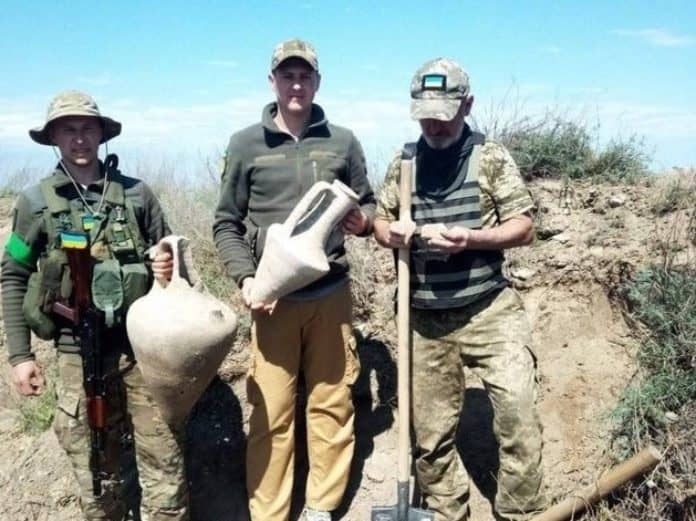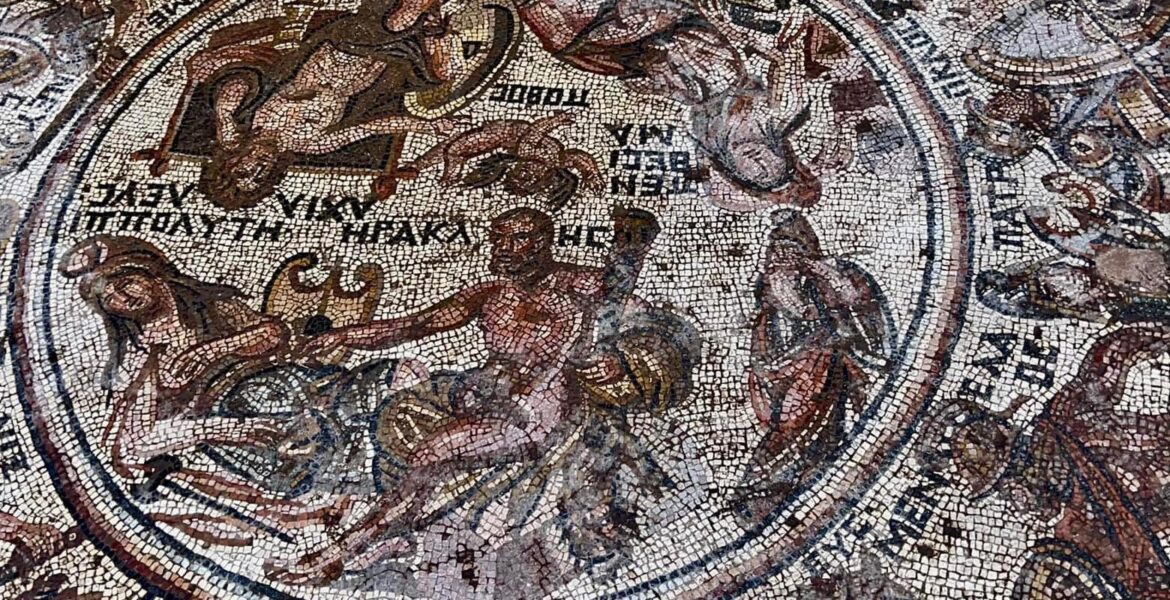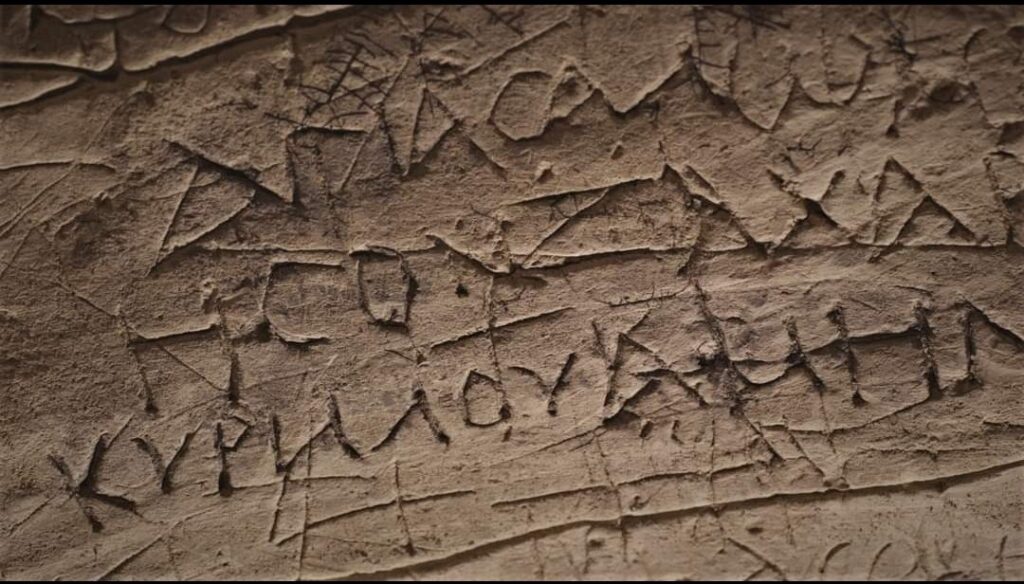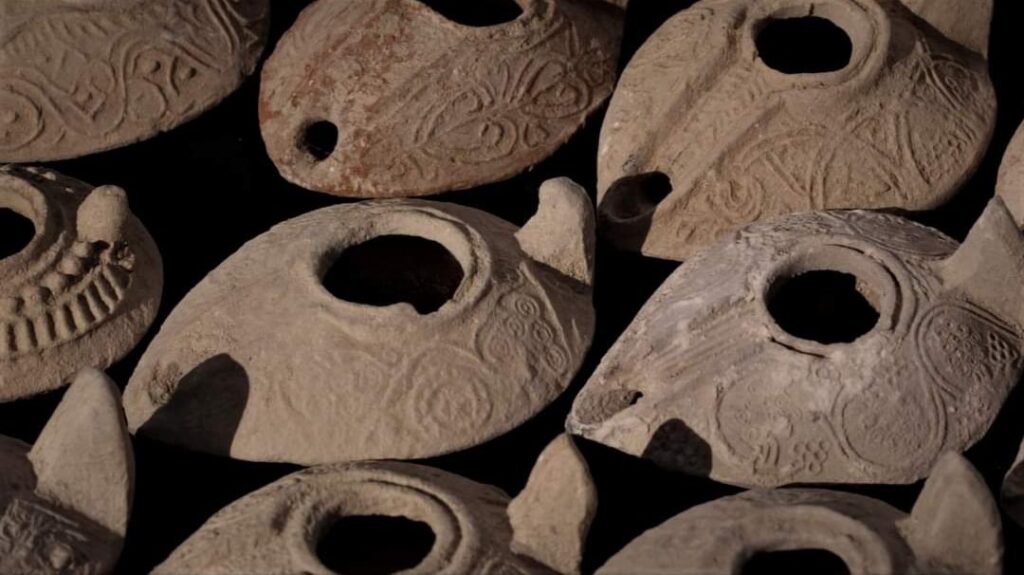2022 was certainly a massive year in archeological research, where many Greek discoveries, and not only in Greece, but also in Ukraine, Israel, Syria and Italy, were made.
Greek City Times has looked back at some of the greatest Greek archeological discoveries made in 2022.
It is recalled that Ukrainian soldiers discovered ancient Greek urns when digging new defences against Russian forces.


Soldiers from the Ukrainian 126th Territorial Defense brigade who found the artifacts wrote on Facebook in May that they were “handed over to the staff of the Odessa Archaeological Museum,” who promised to add them to the museum’s collection.
The artifacts date back to the 4th or 5th century BC, according to Yana Suporovska, a creator and journalist, while the Heritage Daily reported that they are associated with the Neolithic period as well as the Greek, Roman, and Byzantine Empires.
Elsewhere, a team of Greek and Austrian archaeologists excavating in Southern Greece believe they found found the Temple of Samian Poseidon recorded by the ancient Greek writer Strabo.
⚒️Αποτελέσματα της ανασκαφικής έρευνας στο Κλειδί Σαμικού Ηλείας
🔶Εντοπίστηκαν κτηριακά κατάλοιπα που μπορούν να αποδοθούν στο ιερό του Ποσειδώνα.
➡️https://t.co/CWK7vMli5l#MinCultureGr #excavation @oeai_oeaw pic.twitter.com/MWCIaxzmoR
— Υπουργείο Πολιτισμού (@cultureGR) October 7, 2022
The discovery of the sanctuary dedicated to the Greek sea god was made at the acropolis of the ancient city of Samikon, also known as Samicum.
The ancient geographer, philosopher, and historian cited the sanctuary, which dates to the Greek Archaic period of 700 to 480 B.C.E., in his encyclopedic volume Geographica—a work he completed in around 20 C.E.
Strabo wrote that it was a critical center of religious and ethnic identity that anchored the “Amphictyonic League” or alliance of neighboring states within the Triphylia area in the Peloponnese.
“The people of Macistum used to have charge over it,” Strabo wrote, “and it was they, too, who used to proclaim the armistice-day called ‘Samian.’ But all the Triphylians contribute to the maintenance of the temple.”
The archaeological initiative is a collaboration between the Ephorate of Antiquities of Elis, Greece, and the Athens branch of the Austrian Archaeological Institute (AAI).
It is also recalled in October that the 'rarest ever' mosaic depicting the Trojan War was found in Syria.


A 1,300-square-foot mosaic discovered in Syria showing scenes from the Trojan War, a mythological struggle that took place more than 2,000 years ago between the ancient Greeks and the people of Troy, is the 'rarest' ever discovered due to its remarkable preservation.
The magnificent Roman-era artwork was created 1,600 years ago. It is decorated with pictures of powerful Amazons who battled alongside the Troyan people and warriors brandishing swords and shields and bearing their names.
The mosaic is the most recent to be discovered in Rastan, in the Homs area of northern Syria, which the government reclaimed from rebels in 2018 after years of carnage. A year earlier, in 2017, armed groups tried to sell fragments of the mosaic and listed them on social media.
A unique depiction of ancient Amazon warriors who battled alongside the people of Troy is one of the scenarios the mosaic displays, according to Dr Humam Saad, associate director of the excavation and archaeological research at the directorate.
The images are "rich in details," feature scenes from the Trojan War between the Greeks and Trojans, and represent a "find that is unique on a global scale," Dr. Saad told The Associated Press.
In Greek mythology, a race of fierce women known as the Amazons lived in the area that is now Ukraine.
Meanwhile, in December, a 2,000-year-old burial cave was found in a forest in Jerusalem is believed to be the tomb of the midwife who helped with the birth of Jesus - following excavations that uncovered inscriptions citing 'Salome, who was Mary's midwife.'
The Israel Antiquities Authority (IAA) announced - just days before the Christian world celebrates the birth of Christ - that the carvings in ancient Greek and Arabic are enough to prove 'this is the cave of holy Salome.'


Moving across to Southern Italy, known in antiquity as Magna Graecia, Massimo Osanna, the Director of the museum of Velia and the archaeological park of Paestum and Velia, states that the structure unearthed atop the acropolis of Velia was a place of sacrifice to the goddess Athena.
Specifically, this was after the Battle of Alalia, a naval confrontation between the Greeks, Etruscans and the Carthaginians.
The battle, which took place between 541 and 535 BC in the Tyrrhenian Sea between Corsica and Sardinia, was won by the Greeks.
In addition, the archaeologists found the remains of a painted brick wall at the site, which may have been an early form of a temple dedicated to Athena — the ancient Greek goddess of both war and wisdom.


READ MORE: Roman, Byzantine antiquities to be restored to original site at Thessaloniki metro.


